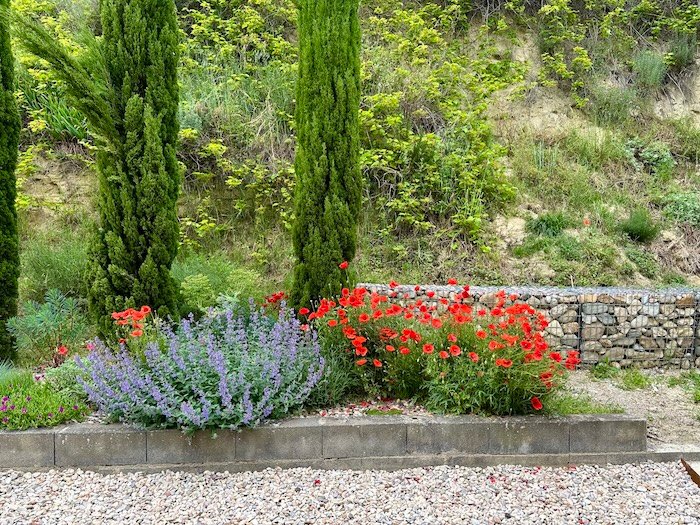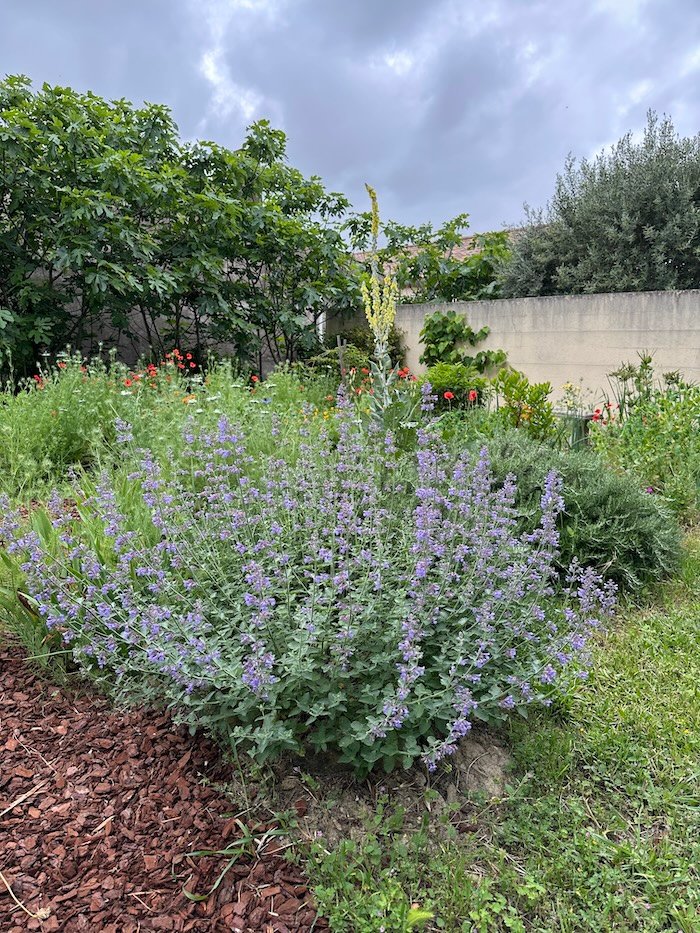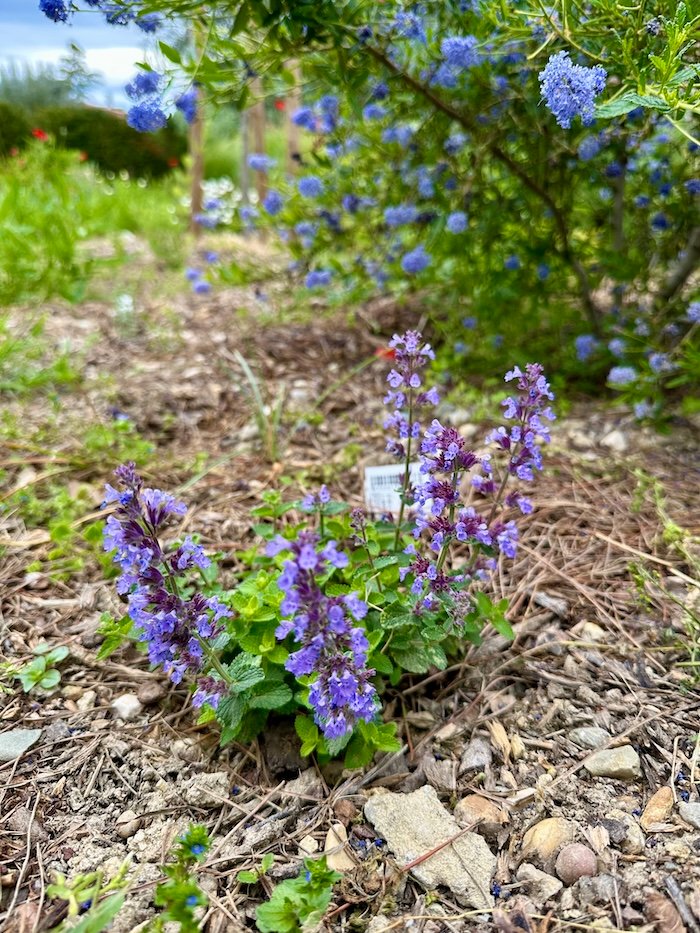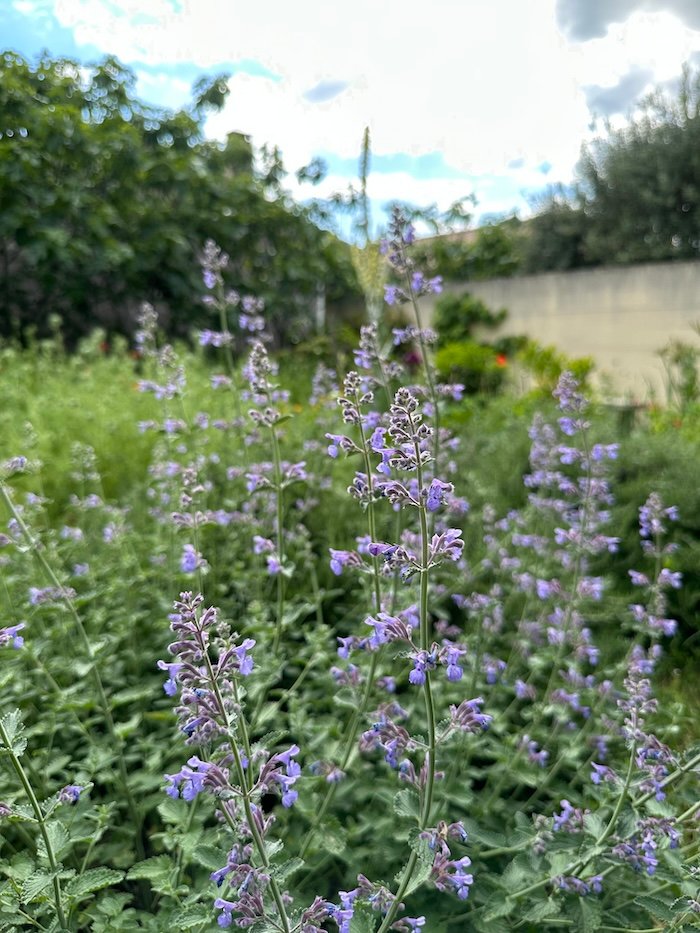When I came here I had some bad memories of Nepeta becoming the mangled victim of deadly cat passion with my own and the neighbors’ cats rolling around on it, digging it out, eating it up, and finally killing it.
But it turns out that not all cats are created equal regarding the effects of Nepeta cataria. Our two boys couldn’t mostly care less. And there are many other varieties of Nepeta with a far less crazy-making effect on cats.
Different Nepeta varieties are at home in many areas of the world from the temperate regions of Asia and the Himalayas to Africa and the Mediterranean. It is a naturalized neophyte in Scandinavia, the British Isles and the Americas.
Nepeta likes the sun and generally will grow in any type of soil, whether lightly acidic or alcaline, dry or fresh, rich or poor, stony or soft – as long as it’s well draining. The only thing none of them can stand is being waterlogged.
So it turns out that Nepeta is a fantastic plant for most gardens. And it is definitely among the most drought and heat tolerant perennials in this Mediterranean garden. It grows enormously and blooms profusely over several weeks, even in a heat wave – and it does it all practically without any additional watering.
Nepeta is not only an easy grower for any garden it is also a medicinal herb, containing various essential oils as well as tannins and bitter substances.
Because of all this I’ve started a small collection of Nepeta cultivars:
Nepeta mussini / racemosa
A native of Western Asia and the Caucasus. Grows to a giant (30x50cm), wide open, bouquet of light purple flowers. Blooms from the beginning of May through middle or end of June, depending on heat. Re-grows well after being cut down and blooms again in October.
Nepeta faassenii
Nepeta faassenii is a hybrid of Nepeta racemosa and Nepeta nepetella. Its cultivars reach heights anywhere between 25 and 80 cm and widths from 40 to 80 cm. Mine bloom mostly from May through June. Trimming them down afterwards results in a more compact growing plant that will re-grow and re-bloom in September/October.
I have the varieties Six Hills Giant, Junior Walker, Cat’s Meow, and Cat’s Pajamas because of their lovely shades of light and dark purple.
Will I add more? Probably not. Most Nepeta look very much alike. They bloom around the same time and their flowers are mostly some kind of light or dark bluish purple. I may add Nepeta kubanica or Nepeta tuberosa for the color and shape of their flowers, or Nepeta parnassica for its impressive height of up to 180 cm.




Leave a Reply